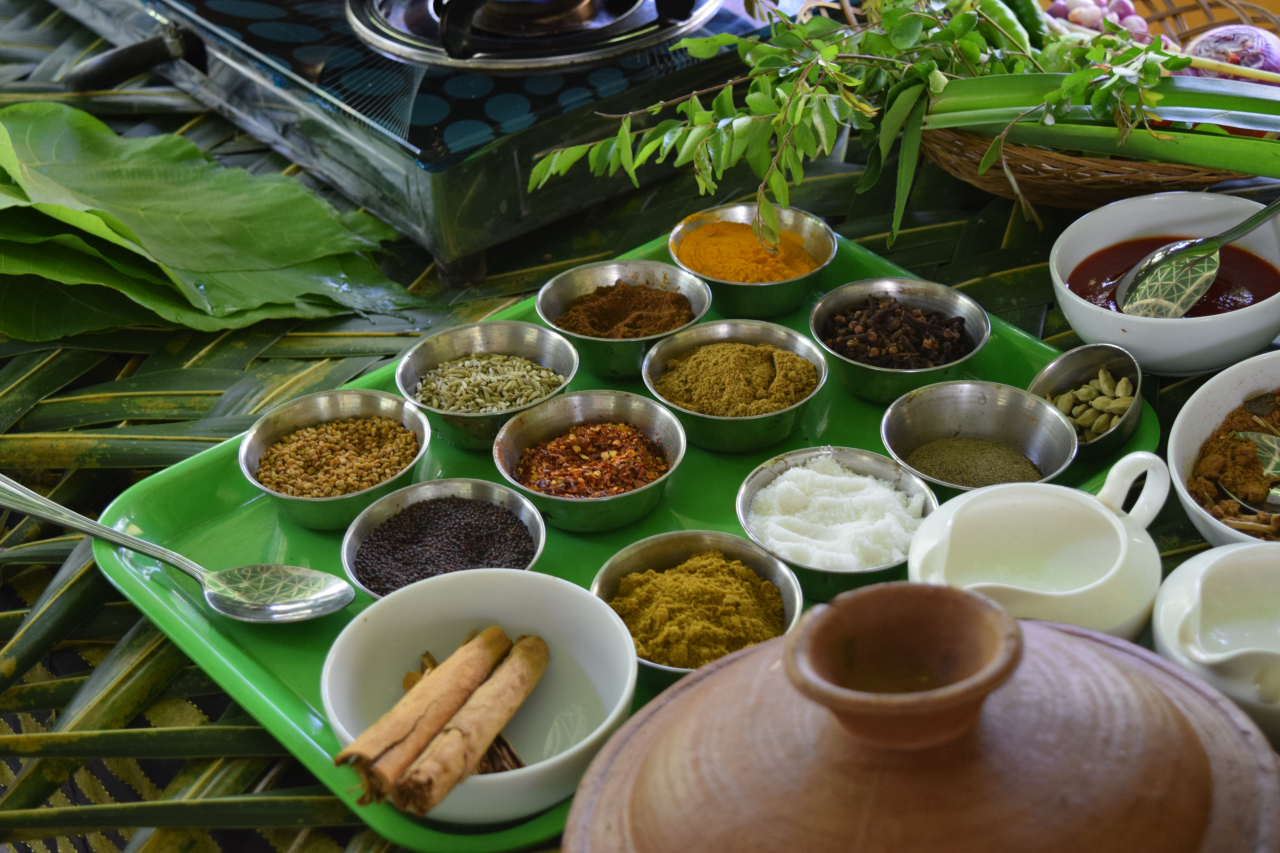
Aside from the scenic landscapes, good food enjoyed during tightly packed travel schedules leave lasting impressions on travelers.
To know the origins and recipes of a nation's traditional dishes, authentic culinary demonstrations are events not to miss out on while in a foreign country.
Since the 15th century, Sri Lanka has offered an exquisite range of spices, exporting some 30,000 metric tons annually, according to a 2020 report by the Sri Lanka Export Development Board.
No matter how scorching the weather, the scent of unique spices and eye-catching ways of cooking in Sri Lanka will surely invigorate your taste buds.
Some representative Sri Lankan spices are cinnamon, ginger, pepper, turmeric, cardamom and nutmeg.
“I have learned the recipes of Sri Lankan dishes from my mother. She told me that they have been passed down for generations,” Kaushalya Weer, founder and chef at the Euphoria Spice and Herbal Gardens in Matale, Sri Lanka told The Korea Herald upon starting the culinary demonstration.
Weer had served in the army when young, and cooking had always been the essential source of remembering and showing his love and pride to the family.
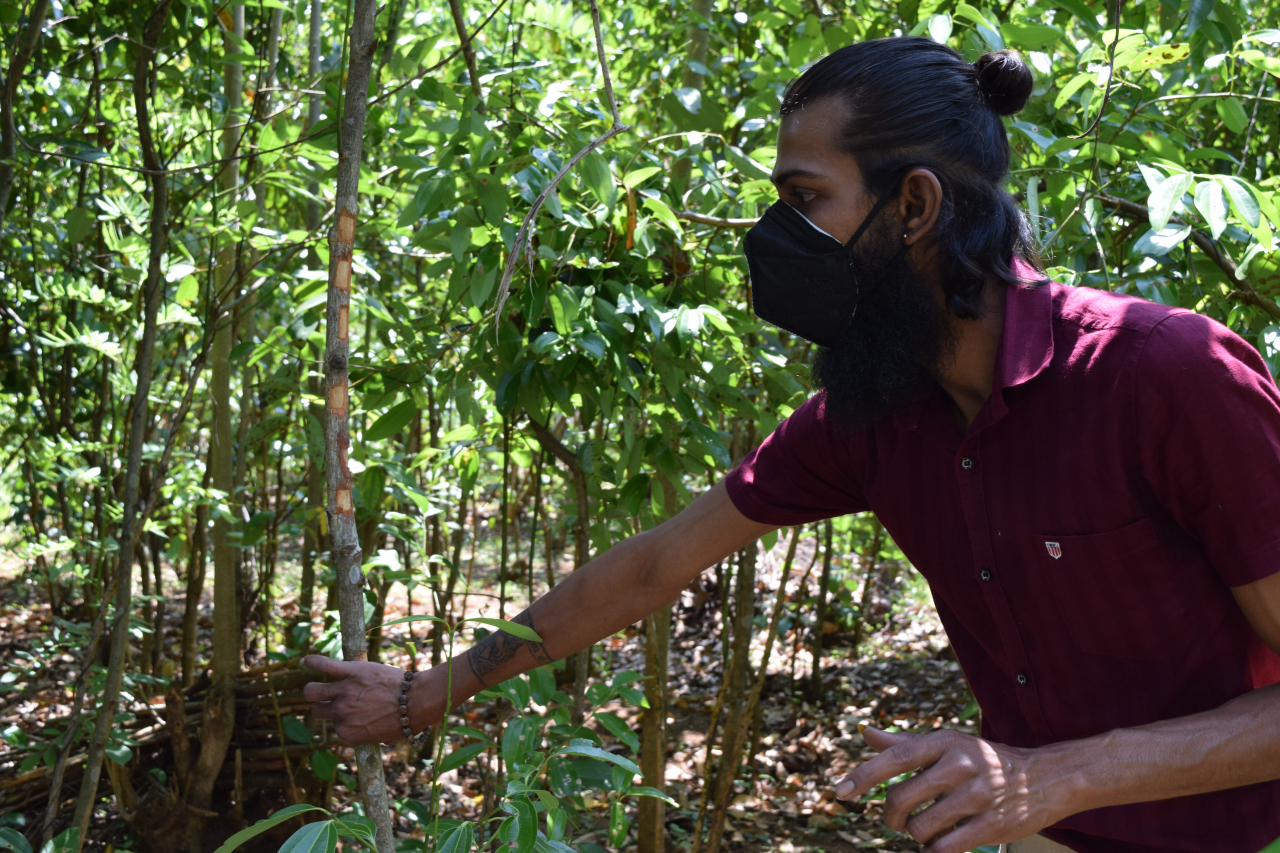
Weer not only holds cooking classes for groups of tourists who have reserved online in the garden, but also conducts guided tours around the spice plantation. At the garden, visitors can learn how diverse types of herbal plants and trees grow up in harmony under proper weather conditions to eventually become processed as unique spices and essential oils in Sri Lanka.
Below are three easy-to-cook Sri Lankan style food presented at the Euphoria Spice and Herbal Gardens.
If you want to challenge cooking Sri Lankan dishes at home, details of recipes can be adjusted depending on ingredients you carry at the moment.
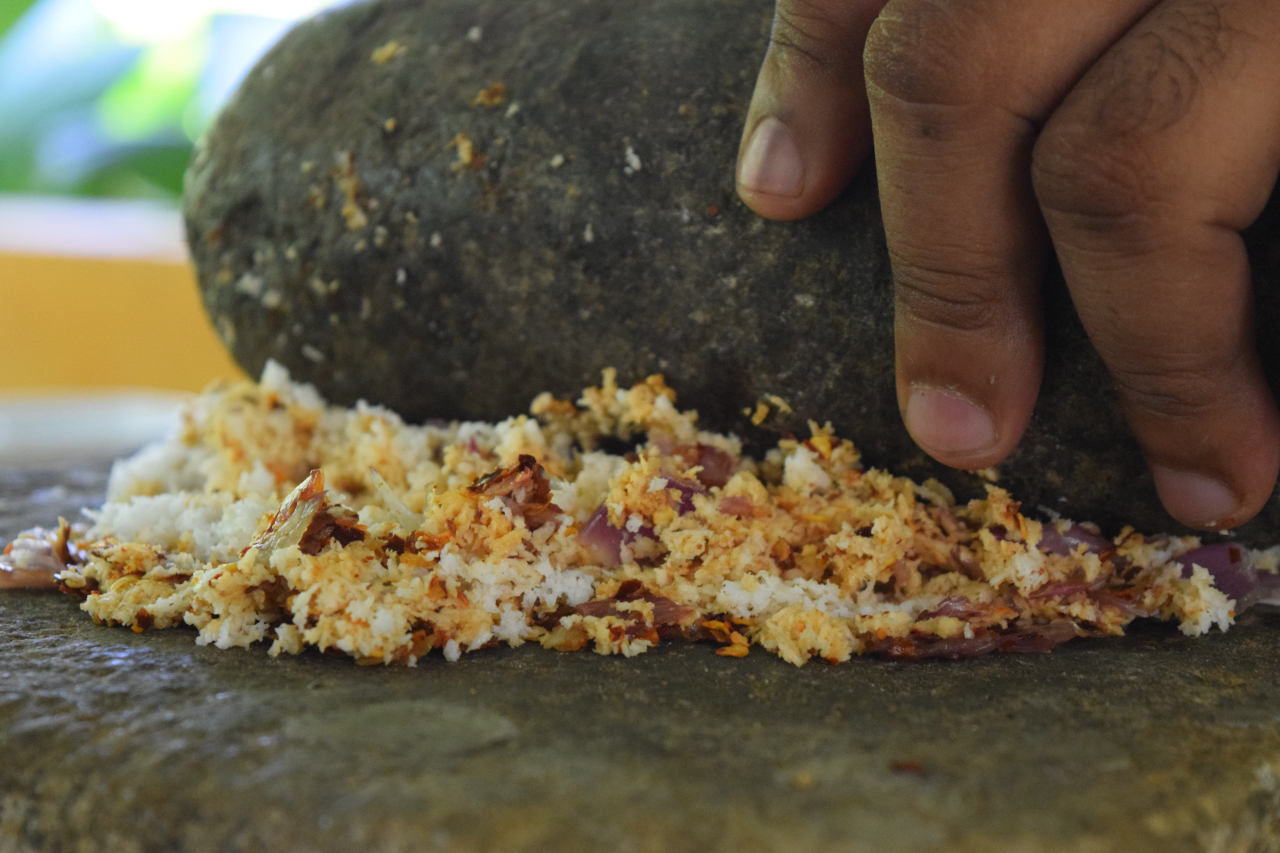
1. Coconut sambol: Pol sambol
Coconut sambol is a Sri Lankan condiment that usually contains grated coconut, chili pepper, garlic and onion. It is probably one of the simplest dishes to make, taking only 10 minutes. The tangy taste of onions and chili in lime juice goes well with the unique texture of grated coconuts.
Sambol is usually enjoyed as toppings on either bread or a bowl of rice. It can be stored up to three months if kept frozen.
Ingredients
- 80 grams grated coconut
- 8 dried red chili
- 5 small onions or shallots
- 1/2 lime
- 1/4 teaspoon sugar
Instructions
1. Add grated coconut and ground dried red chili flakes to a mortar.
2. Muddle them using a pestle, then add sugar and bash them again. Onions and garlic can be added to the mix.
3. Add lime juice if you want some sweet and refreshing kicks to the dish.
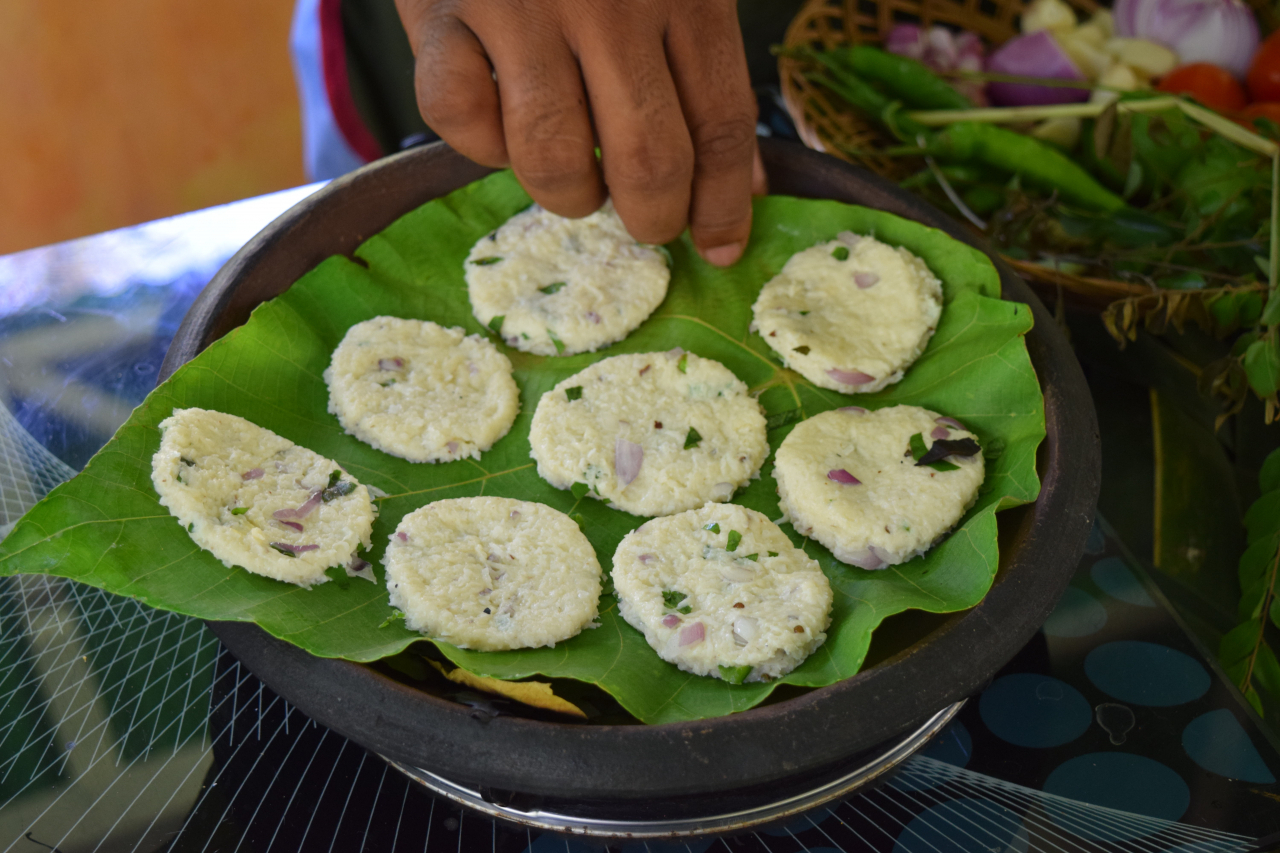
2. Coconut flatbread: Pol roti
Coconut flatbread is one of the most popular street foods at food carts or roadside restaurants, along with fresh coconut juice.
Usually consumed as breakfast meals or teatime snacks, Sri Lankan roti is traditionally vegan.
Just as most kinds of bread, pol roti tastes best when warm and crispy. It can be served with chicken curry or dhal curry for meals.
Ingredients
- 1 cup all-purpose flour
- 1/2 cup shredded coconut
- 1/2 tablespoon salt
- 2 tablespoons chili flakes (optional)
Instructions
1. Mix shredded coconut with flour and chili flakes.
2. Add water and coconut milk, and stir them until it turns into a dough.
3. Flatten and cook in the oiled pan for around five to ten minutes.
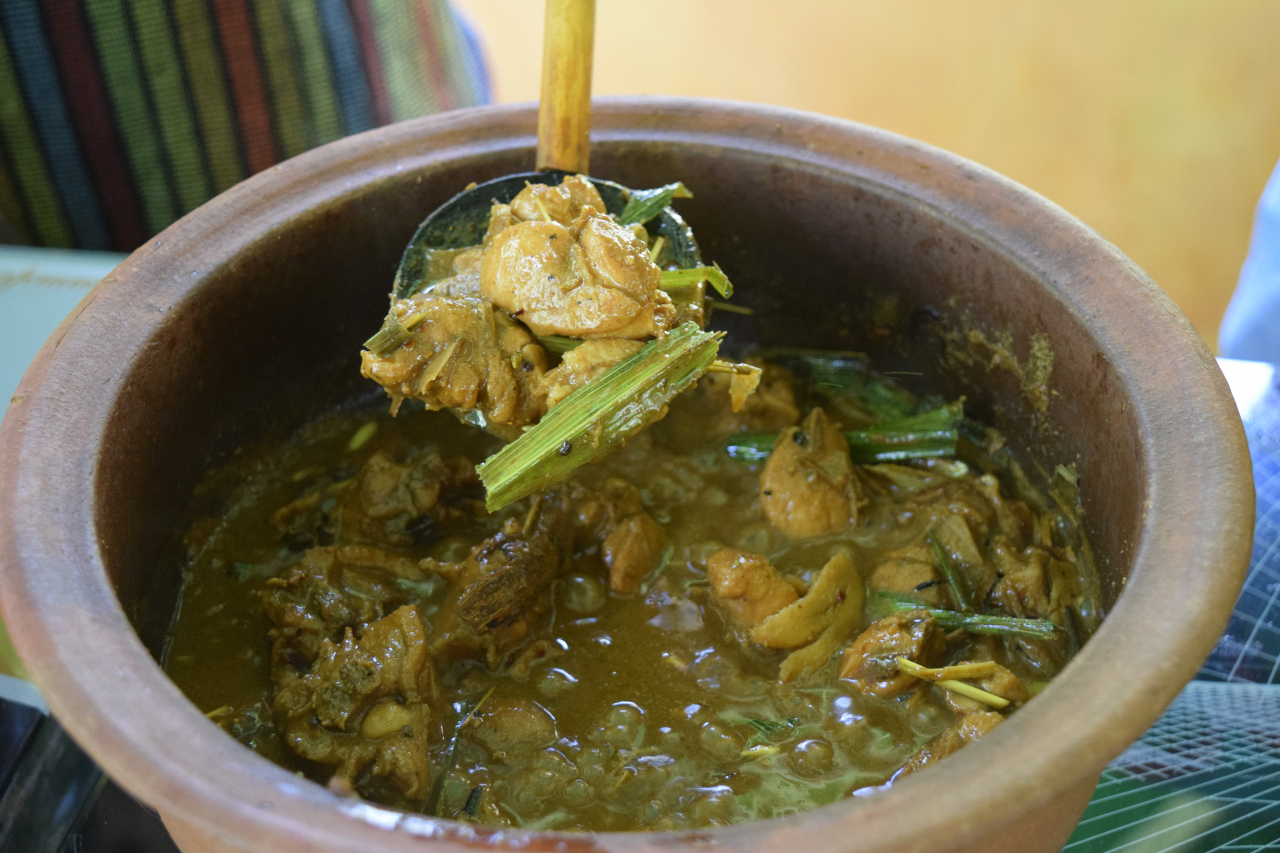
3. Sri Lankan chicken curry
Chicken curry have become a globalized cuisine today, with countless recipes depending on different regions.
But curry in Sri Lanka stands out for its unique scent of cinnamon and creamy coconut milk added to the basic recipe. The madras curry powder is known to blend well with other types of spices, which enables different variations to the curry.
You can always adjust the level of spiciness by the controlling the amount of chili flakes and garlic.
The Sri Lankan way of having curry with rice is to mix it using your hands.
Ingredients
- 3 boneless chicken breasts
- 2 tablespoons white vinegar
- 1/4 cup madras curry powder
- 1 tablespoons roasted curry powder
- 1 teaspoon ground black pepper
- 2 tablespoons coconut oil and coconut milk
- 1 sliced red onion
- 4 green chili peppers
- 8 green cardamom pods
- 6 whole cloves, curry leaves
- 1 tablespoon ginger root
- 2 cinnamon sticks
- 3 minced cloves garlic
- 1 tomato
Instructions
1. In a bowl of chicken, combine and mix curry powder, vinegar and pepper.
2. Heat coconut oil in frying pan, then cook sliced chili, cardamom pods, onions, cloves, curry leaves, ginger and cinnamon stick for five to seven minutes.
3. Once the onion turns dark brown, add chopped tomato and cook for another 10 minutes on low heat.
4. Stir in the garlic and cook for an additional minute.
5. Add the chicken mixture and water, then stir and simmer until the chicken is fully cooked.
6. Add roasted curry powder and coconut milk, and stir for three minutes.



















![[Today’s K-pop] Treasure to publish magazine for debut anniversary](http://res.heraldm.com/phpwas/restmb_idxmake.php?idx=642&simg=/content/image/2024/07/26/20240726050551_0.jpg&u=)